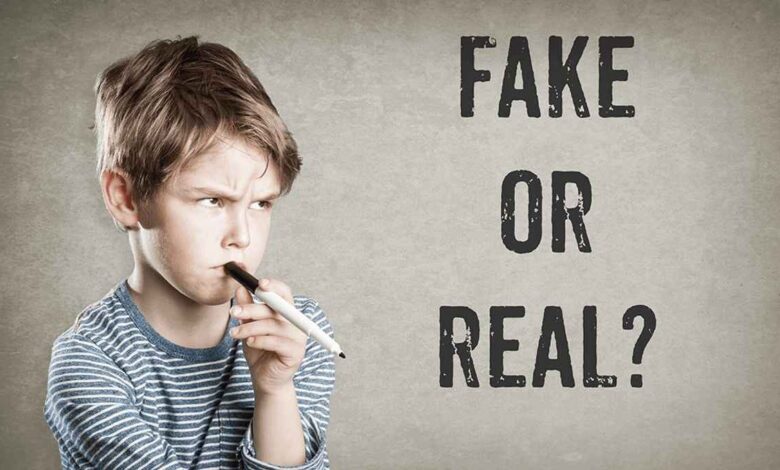The Truth About Human Gathering Fake: What You Need to Know

Human gathering fake is when people or groups create events that are not real. These fake gatherings can trick others and make them believe something that isn’t true. For example, a group might say they are holding a big event, but it’s all just a lie to get attention or cause confusion.
In today’s world, with so much information online, it’s easy to fall for these tricks. Many people share these fake events without checking if they are real. This can lead to problems like misunderstandings and even safety risks. It’s important to know how to spot a human gathering fake so we can stay safe and informed.
What Is Human Gathering Fake?
Human gathering fake is when people or organizations create events that do not really exist. These can include fake protests, social events, or gatherings meant to mislead others. Sometimes, these events are created with bad intentions, such as trying to trick people into believing something that is not true. Here are some examples:
- Fake Protests: Some groups might say they are holding a protest for a cause, but it is not real. They might do this to create chaos or to influence opinions.
- False Social Events: Someone might claim they are hosting a big party or concert, but it is all a lie to get attention or to gather personal information.
- Misleading Fundraisers: Fake fundraising events can be created to steal money from people who want to help.
Why Do People Create Human Gathering Fake Events?
Understanding why people create these fake events can help us be more aware. Here are some common reasons:
- Manipulative Intent: Some people want to control how others think or act. They may create fake gatherings to push their own agenda.
- Attention Seeking: Some individuals enjoy the attention they receive from creating a buzz online. They might not care if it’s true or false.
- Confirmation Bias: People often believe information that matches their own beliefs. Fake gatherings can take advantage of this by spreading false narratives.
How to Spot a Human Gathering Fake
Identifying a human gathering fake can be challenging, but there are some signs to look for:
- Inconsistent Information: If you see different details about the event in various places, it might be fake. Always check multiple sources.
- Lack of Genuine Interaction: Real events usually have discussions or comments from attendees. If there’s little to no interaction, it could be a sign of a fake event.
- Too Good to Be True: If an event promises something that seems unbelievable, like a free concert with a famous star, it might be too good to be true.
Here are some tips for spotting fake gatherings:
- Check the Organizer: Look up who is organizing the event. If they have a history of fake events, be cautious.
- Search Online: Use search engines to see if other people have reported the event as fake.
- Ask Questions: If you’re unsure, ask others if they’ve heard of the event. Sharing information can help reveal the truth.
How to Protect Yourself from Human Gathering Fake
It is essential to protect ourselves from falling for human gathering fake events. Here are some strategies:
- Be Skeptical: Always question information that seems surprising or outrageous. Think critically before sharing.
- Verify Before Sharing: If you find an event online, take a moment to verify it. Check reliable sources before passing it on.
- Educate Others: Talk to friends and family about human gathering fake. The more people know, the less likely they are to fall for these tricks.
The Impact of Human Gathering Fake
The effects of human gathering fake can be serious and wide-ranging. Here are some impacts to consider:
- Undermining Trust: Fake events can make people distrust real events and organizations. When people feel tricked, they become skeptical of everything they see.
- Stoking Division: Fake gatherings can create division among communities. They can cause arguments and misunderstandings among friends and family.
- Public Safety Risks: In some cases, fake gatherings can lead to real-world chaos, such as public disturbances or even violence.
Famous Examples of Human Gathering Fake
There have been several notable examples of human gathering fake events that have caused confusion and chaos. One such incident occurred during a political campaign, where a fake protest was organized online. The event was widely shared on social media, attracting many people who believed it was real. However, when attendees arrived, they discovered that the protest was a hoax, meant to manipulate public opinion. This event not only wasted people’s time but also created tension in the community, highlighting how damaging fake gatherings can be.
Another example involved a supposed charity concert that promised big-name artists and free tickets. Many people signed up, excited about the event. However, it turned out to be a scam to collect personal information. People who registered were later targeted by spam and phishing attempts. This situation emphasizes the importance of being cautious about events that seem too good to be true.
The Role of Social Media in Human Gathering Fake
Social media plays a significant role in the spread of human gathering fake events. Platforms like Facebook, Twitter, and Instagram allow information to spread quickly. This rapid sharing can lead to misunderstandings and false beliefs. Since anyone can create an event and invite others, it becomes easy for fake gatherings to slip through the cracks.
Moreover, social media algorithms often promote content that gets more engagement, which can include sensational or misleading events. This means that fake gatherings can gain more visibility than real ones, making it harder for users to distinguish between truth and deception. To combat this issue, social media companies need to take responsibility for monitoring and verifying events to protect their users.
How to Report a Human Gathering Fake
If you come across a human gathering fake, it is crucial to report it to help prevent others from being misled. Most social media platforms have reporting tools that allow users to flag suspicious events. When you report a fake gathering, be sure to provide as much information as possible, including links and details about the event. This can help platform administrators take action quickly.
In addition to reporting on social media, you can also inform local news outlets or community organizations. By spreading the word about fake gatherings, you contribute to a safer online environment. Encouraging others to report suspicious events can amplify the message and protect more people.
The Importance of Media Literacy Against Human Gathering Fake
Media literacy is a vital skill in today’s information-driven world. It helps individuals understand how to evaluate sources and identify fake news or events. Schools and community programs can play a significant role in teaching media literacy. By educating people, especially young ones, about how to discern reliable information from misleading content, we can reduce the impact of human gathering fake.
Workshops and online courses can also be effective in spreading media literacy skills. These programs can teach participants how to fact-check information and spot red flags in events they see online. Building a society that values critical thinking will empower individuals to navigate the digital world more safely.
What to Do If You Attend a Human Gathering Fake
If you unknowingly attend a human gathering fake, it is important to stay calm. First, assess the situation and try to understand what is happening. If the gathering seems off or not as advertised, you can discreetly leave the event. It’s essential not to engage in any arguments or conflicts that might arise, as this could escalate tensions.
After leaving, take time to reflect on what happened and share your experience with others. By informing friends and family about the fake gathering, you can help them avoid similar situations. Additionally, consider reporting the event online to help prevent others from being misled.
Tips for Sharing Real Events Only
To ensure that you are sharing real events, consider following these simple tips. First, verify the source of the information. Check if the organizer is reputable and has a history of hosting successful events. If the source is unknown or has a suspicious reputation, it’s best to refrain from sharing.
Second, look for official announcements. Many events will have websites or social media pages that provide accurate details. Always cross-check the information before passing it on to others. Lastly, encourage your friends and family to practice these habits too. By creating a culture of verifying information, we can help reduce the spread of human gathering fake.
How to Help Others Avoid Human Gathering Fake
Helping others avoid human gathering fake can create a more informed community. Start by sharing what you’ve learned about identifying fake events. You can organize discussions or workshops to educate friends and family about the dangers of misinformation. Encourage them to ask questions and think critically about events they encounter.
You can also use your social media platforms to raise awareness. Share articles, tips, and resources that highlight the importance of being cautious with event information. The more people know about human gathering fake, the less likely they are to fall for these tricks. Together, we can build a community that values truth and understanding.
Conclusion
In summary, human gathering fake is a growing concern that requires our attention. By understanding what it is, how to identify it, and how to protect ourselves, we can work together to combat this issue. Through education, critical thinking, and community support, we can create a safer digital environment. Let’s stay informed and help each other navigate the complexities of the online world, ensuring that we are part of a society that values honesty and integrity.


